L.I. How Did We Get Here? Energy

Energy
A Timeline of Energy on Long Island
For decades, any discussion about energy policy on Long Island quickly degraded into an argument over the Shoreham Nuclear Power Plant. Fortunately, the Shoreham controversy is now far in the rearview mirror. However, the legacy of Shorham and failed hurricane responses led to reform efforts that met with varying degrees of success and resulted in Long Island being served by a unique public-private utility structure. With the power grid under public control, Long Island has stepped up to the frontline of policy debates over the adoption of renewable energy. The Long Island region leads New York State in solar PV systems and electric vehicle ownership, while the Long Island Power Authority approved the first offshore wind farm in New York State. Looking ahead, proposals are currently being evaluated to build off the south shore of Long Island what could be among the largest fields of offshore wind turbines to be found anywhere in the world.
As Long Island transitions to clean energy, to understand the challenges presented by our idiosyncratic utility structure, it is helpful to ask the question, Long Island: How Did We Get Here?
This 12-minute video covers major milestones and events from the timeline of the history of Long Island's electric power system, which resulted in our unique public-private utility structure.
ENERGY ON LONG ISLAND — TIMELINE OF EVENTS
1911 — LILCO Founded
Ellis Laurimore Phillips, an engineer, and a group of New York City investors founded the Long Island Lighting Company, or LILCO. Prior to its formation, Long Island’s energy demands were being met by various, small power companies providing service to municipalities and villages. The founders plan was to purchase these smaller utilities and connect them to an island-wide grid which began with the purchase of electric providers in Amityville, Islip, Northport, and Sayville.
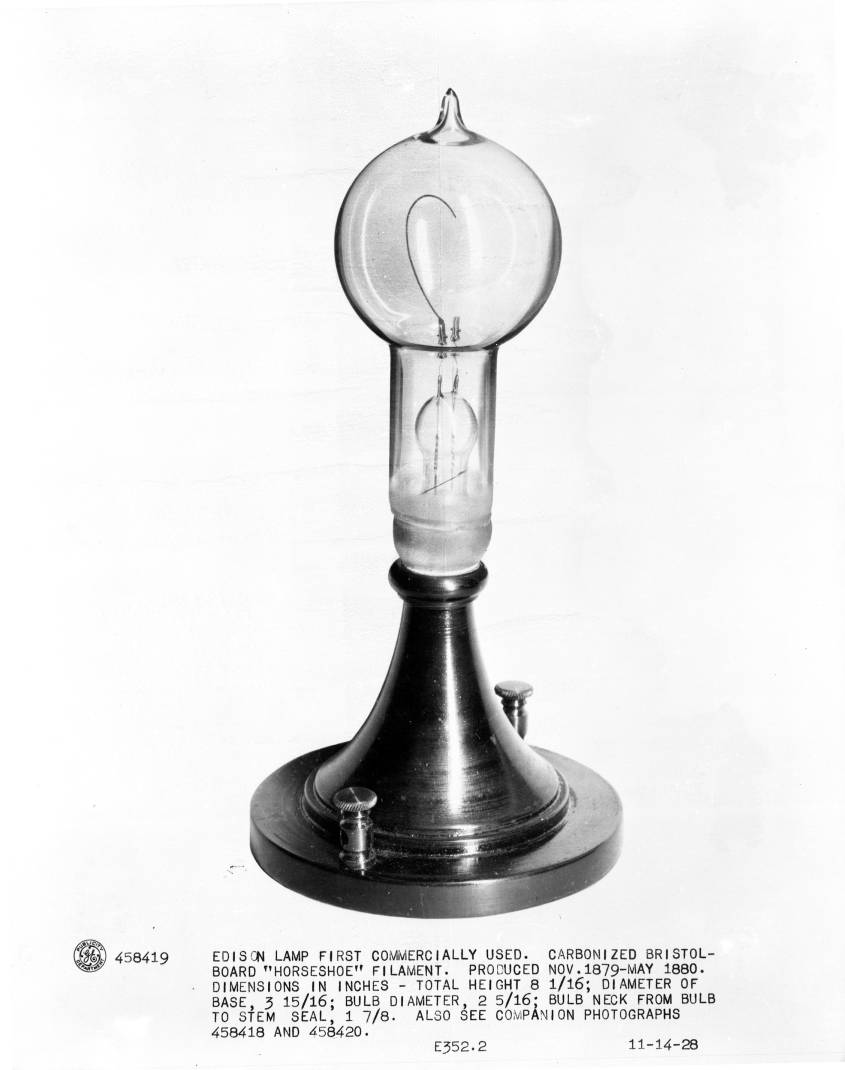
Historical LILCO Photos
Long Island Lighting Company Wikipedia Page
LILCO website from 1996
Post-WWII — LI Population Boom
In the post-WWII era, much of the United States population was beginning to grow into the suburbs. Nowhere was that more apparent than on Long Island, where in the decade between 1940 and 1950 the population of Nassau and Suffolk counties skyrocketed from 608,833 in 1940 to 948,894 in 1950 - a dramatic 55.8% increase in just ten years. Suburban development was boosted with incentives under the G.I. Bill. Second and third-generation children of immigrants moved from New York City out to Long Island and settled in new housing developments built during the post-war boom. Levittown in particular became the archetypal suburb, where home construction was streamlined to be produced on a large scale.
Long Island Population Statistics
1950 Census Records - National Archives
Post-War Suburbanization Document
1948 — NY Electric Connected
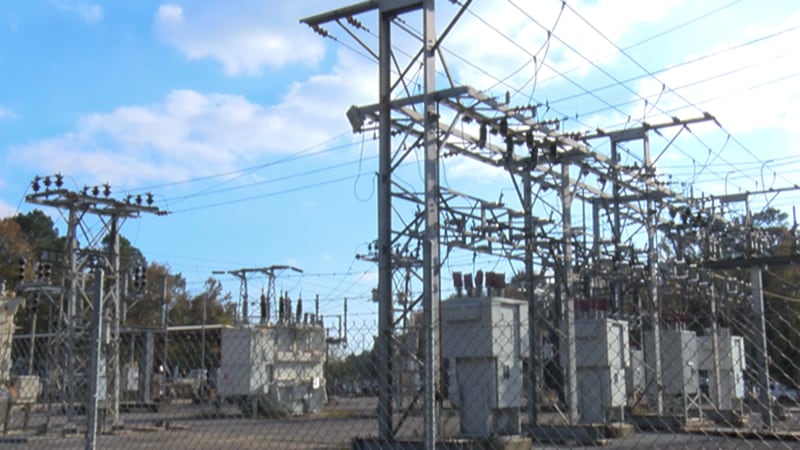
Long Island is connected to the New York State electric grid.
1965 — Great Blackout
On November 9, 1965 the Great Blackout caused the power systems throughout the Northeast to fail, and plunged New York, Boston and other cities into darkness during the evening rush hour. The blackout originated at a power plant along the Canadian border, but the failure surged through the Northeast system. Over 30 million people and 80,000 square miles from Canada to Maryland were left without electricity for up to 13 hours and more than 800,000 riders were trapped in the New York City subway.
“This Day in History” (history.com)
Associated Press video “Today in History”
Great Northeastern Blackout 1965 - New England Historical Society
Audio of the WABC broadcast as the blackout happened
The New York Times article - November 10, 1965
The Great Blackout in Photos
1966 — Shoreham Nuclear Power Plant proposed
In April of 1966, the Long Island Lighting Company first proposed construction of a nuclear power plant to power 500,000 homes. The original cost was estimated to be $65 million and a 60-acre piece of property overlooking the Long Island Sound between Shoreham and Wading River was chosen as the site of the plant. Initially expected to produce 540 megawatts of power by 1973 it was later increased to 820megawatts which increased the price to $217 million and pushed back completion of the project to 1975. By 1979, cost overruns and delays pushed the price tag to $1.5 billion and an opening date of 1981
NY Times article April 14, 1966
1973 — Construction begins on Shoreham
The plant was constructed between 1973 and 1984 with a General Electric type 5 boiling water reactor using Mark II containment. Its location was on 455 acres along Long Island Sound– near the mouth of the stream that forms the border between Brookhaven and Riverhead towns. The area was largely rural at the time of construction.
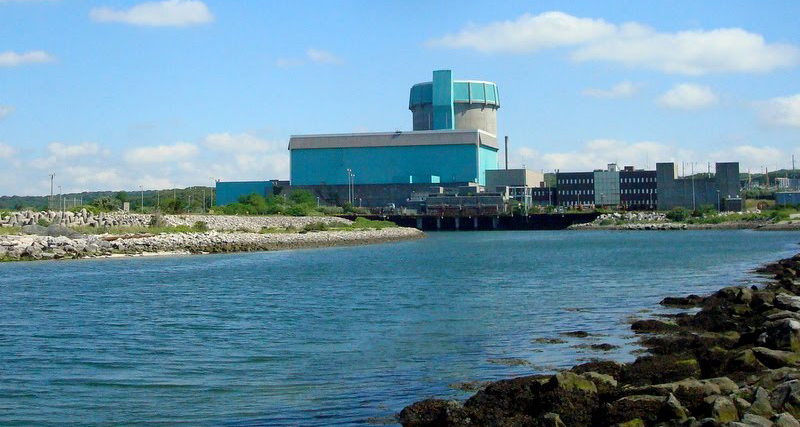
[caption] Nuclear Regulatory Commission from US, CC BY 2.0 <https://creativecommons.org/licenses/by/2.0>, via Wikimedia Commons
New York Times article, May 27, 1988
1979 — Three Mile Island
The partial meltdown of the Unit 2 reactor at the Three Mile Island nuclear facility in Pennsylvania began at 4 a.m. on March 28, 1979. It rated a Level 5 – Accident with Wider Consequences of the seven-point International Nuclear Event Scale and remains the most significant nuclear accident in United States history.
According to the International Atomic Energy Association (IAEA), the Three Mile Island accident marked a substantial turning point in the worldwide growth of nuclear power. In the preceding sixteen years up till 1979, the number of reactors under construction globally increased in every year except two. After the accident, however, the number of reactors under construction in the U.S. declined between 1980 and 1998, with increasing construction costs and delayed completion dates.
Netflix Trailer for ‘Meltdown: Three Mile Island’ documentary
Netflix full film
“This Day in History” (history.com)
Three Mile Island Accident - world-nuclear.org
1979 — Shoreham Protests
The Three Mile Island accident boosted the credibility of anti-nuclear groups and generated protests around the world. The largest demonstration was held in New York City in September 1979 and involved 200,000 people, including speeches by Jane Fonda and Ralph Nader. The New York rally was held in conjunction with a series of nightly "No Nukes” concerts given at Madison Square Garden from September 19 to 23 by Musicians for Safe Energy. On Long Island, protests against Shoreham were among the biggest worldwide. On June 3, 1979, 15,000 activists gathered near Shoreham to protest the construction of the nuclear facility. Later in the day when the rally moved to the construction site of the plant more than 600 were arrested, including 1960s anti-war protesters David Dellinger and Jerry Rubin. Activists took down one fence and scaled others surrounding the site. Longtime opponent of nuclear energy, Pete Seeger was among those who performed at the rally.

Suffolk Times Archive
NEWS 12 Project “Power to the People” includes video
New York Times article - June 4, 1979
1980s — Shoreham Evacuation Plans Controversy
As public opposition to nuclear power grew, lessons learned from Three Mile Island accident suggested that evacuation plans needed closer scrutiny, leading to expanded nuclear plant federal regulations to be adopted. The evacuation plans for Shoreham arose as a fundamental issue in whether it could, or should, ever open. To get federal approval to begin operating, LILCO needed to demonstrate the safety of its evacuation plans in conjunction with local emergency officials. Local officials however, resisted participating in drills for what was seen as an unachievable task of evacuating large parts of Long Island. LILCO eventually staged its own drills, with its workers acting as emergency responders. Long Island's dead-end geography, the Long Island Expressway's reputation for traffic jams, and local refusal to participate in the drills all worked to sour the public's opinion on hope for a safe evacuation plan, leading to the plant's eventual abandonment.
NEWS 12 Project “Power to the People”
New York Times article - “A Chronology of Shoreham's 25-Year Political Meltdown”
1984 — Shoreham construction completed
During the plant's protracted construction which lasted from 1973 until 1984, and ended with the construction of an 820MW reactor, the Shoreham Nuclear plant had the unique, but undesirable distinction of being one of the few U.S. nuclear facilities to have been built, at great expense, but never used.
New York Times article, March 18, 1984
1985 — Hurricane Gloria
Hurricane Gloria made landfall on Long Island on September 27, 1985. Along Long Island, the high storm surge flooded hundreds of streets and caused substantial beach erosion. High winds downed thousands of trees and damaged hundreds of homes, causing widespread power outages. Gloria's high winds caused 1.5 million people in the state to lose power, including two-thirds of the Long Island Lighting Company’s customers. The lengthy power outage on Long Island, in some cases more than eleven days, was a significant factor in public support for shutting Shoreham and replacing Long Island Lighting Company.
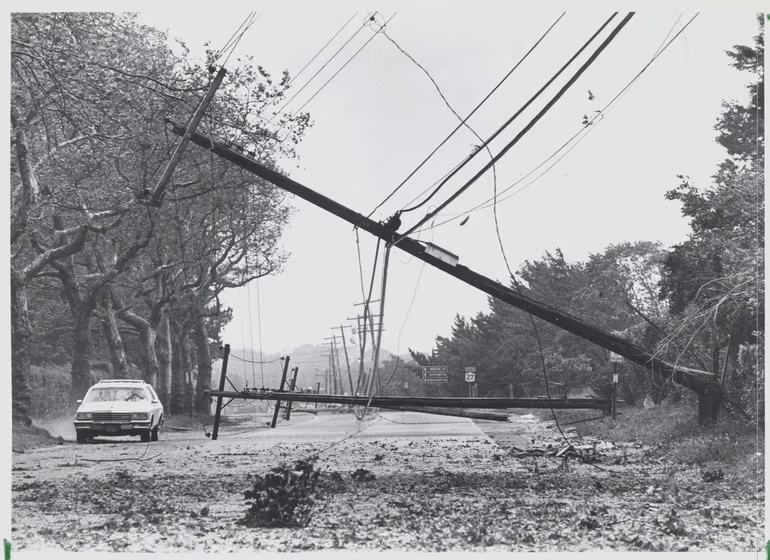
More Details +
When it made its second landfall on Long Island on September 27, 1985, Gloria was accompanied by a storm surge of 6.9 ft at Battery Park, Manhattan, the highest along its path. The highest wind measured was a gust of 85 mph at Islip Airport. Rainfall in the state of NY reached 8.04 inches, although was much less near the coast, reaching 3.48 in Central Park.
Along Long Island, the high storm surge flooded hundreds of streets and caused substantial beach erosion. High winds downed thousands of trees and damaged hundreds of homes, causing widespread power outages.
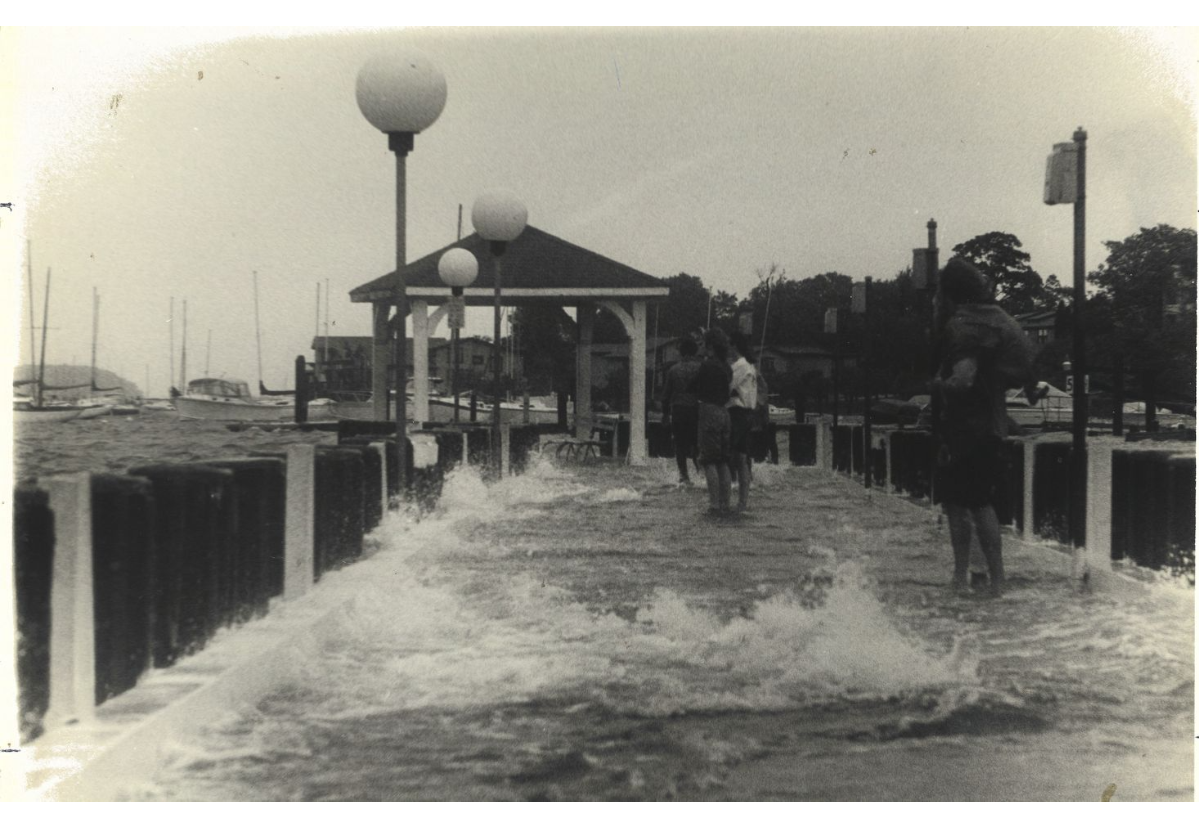
There were four deaths on Long Island, two related to heart attacks and the other two related to fallen trees. There were also 14 injuries, many due to downed tree branches. It is estimated that wind gusts may have reached as high as 115 mph on the east end of Long Island. Forecasters believe that damage across parts of Long Island indicated winds in the Category 3 range, as evidence by the damage seen at MacArthur Airport. Across eastern Long Island, where Gloria’s wind gusts were likely worst, thousands of trees were sent into buildings and across roads. In addition, the winds ripped the roofs off of buildings, including hangars at MacArthur Airport and the roof of the Islip Police Station. Persistent exposure to high winds and waves led to beach erosion, washing away several piers and docks. The storm surge destroyed 48 houses on the ocean side of the island. Gloria's high winds caused 1.5 million people in the state to lose power, including two-thirds of the Long Island Lighting Company’s customers. The lengthy power outage on Long Island, in some cases more than eleven days, was a significant factor in the Long Island Lighting Company to be shut down.
1985 — Shoreham Operated/Tested
In late 1984, the Nuclear Regulatory Commission voted 5 to 0 to allow the Long Island Lighting Company to load uranium fuel at the Shoreham nuclear plant and begin operating at extremely low levels for tests. Low-power testing, the equivalent of two days at full operating capacity, were conducted in the summer of 1985. Under pressure from then Governor Mario M. Cuomo, who cited inadequate evacuation plans for Long Island residents, the plant was never allowed to be commercially operated.
New York Times article - Feb 12, 1985
NY Times article - Feb 18, 1985
1986 — LIPA Created
The Long Island Power Authority was created by an act of the New York State Legislature as a public non-profit entity. One of the two express purposes of the act was the closure of the Shoreham nuclear power plant. The second purpose was to replace LILCO with a publicly owned power authority. The legislature found a “lack of confidence that the needs of the residents and of commerce and industry in the service area for electricity can be supplied in a reliable, efficient and economic manner by the Long Island Lighting Company” and "Such matters of state concern best can be dealt with by replacing such investor-owned utility with a publicly owned power authority."
Long Island Power Authority Act
LIPA website About Us
New York Times article, June 13, 1986
1988 — Shoreham Convictions
In December 1988, a Federal Grand Jury found the Long Island Lighting Company and its former president had deceived the Public Service Commission to obtain $2.9 billion in rate increases from customers to help pay for the Shoreham nuclear power plant, making the utility liable for $22.8 million in damages.
New York Times article, December 6, 1988
NEWS 12 Project “Power to the People”
1989 — Shoreham Shelved
By the time Nuclear Regulatory Commission (NRC) finally authorized the commercial operation of the Shoreham Nuclear Power Plant in April 1989, it seemed like a consolation prize. The Long Island Lighting Company began construction on Shoreham in 1973, and it was completed in early 1984. Never having operated beyond low-level testing, on May 1, 1989, amid public opposition to nuclear power in general and Long Island's lack of a viable escape plan in case of a nuclear emergency, the plant was shuttered. LILCO agreed not to operate the plant in a deal with the state under which most of the $6 billion cost of the unused plant was passed along to Long Island residents. The plant was fully decommissioned in 1994. In the end, Shoreham generated more controversy than electricity.
NEWS 12 Project “Power to the People”
New York Times article - "Dismantling Shoreham Plant: Uncharted Waters”
New York Times LONG ISLAND OPINION; Despite Shoreham's Closing, Energy Alternatives Exist
Crazy Facts About Shoreham
1998 — LIPA Takes Over
On March 5, 1998, final Federal approval was received for LILCO’s transmission and distribution assets to be bought by the Long Island Power Authority. LIPA's chairman at the time, Richard Kessel, had started public life as a consumer advocate who criticized LILCO and the Shoreham Nuclear plant. LIPA absorbed the debt created by the construction of the Shoreham plant, which was also purchased by LIPA, an aspect of the deal that resulted in significant criticism. However, as a public utility LIPA had lower bond interest rates and did not have to pay dividend to shareholders, resulting in lower electric rates.
More Details +
On March 5, 1998, final Federal approval was received for LILCO’s transmission and distribution assets to be bought by the Long Island Power Authority, and for LIPA to take over LILCO's electrical transmission network. LIPA's chairman at the time, Richard Kessel, had started public life as a consumer advocate who criticized LILCO and the Shoreham Nuclear plant. The deal was completed later in the year. LIPA absorbed the debt created by the construction of the Shoreham plant, which was also purchased by LIPA, an aspect of the deal that resulted in significant criticism. That cost would be passed on to ratepayers, but as a public power authority, LIPA could issue tax-free bonds with lower interest rates and did not have to pay shareholder dividends. This resulted in lower electric rates. The removal of a profit motive also allowed more emphasis to be placed on promoting energy efficiency and renewable energy.
The rest of LILCO, including its electricity generation and natural gas dealings, merged with Brooklyn Union Gas to form KeySpan Energy Corporation. Keyspan was contracted to operate the electric transmission network now owned by LIPA. KeySpan was taken over by National Grid in 2007. National Grid handed control of Long Island's electrical transmission system to New Jersey utility PSEG in 2014.
1998 — Keyspan
Keyspan Corporation was founded in 1998 as a result of the merger of Brooklyn Union Gas and the Long Island Lighting Company, under chairman and CEO Robert Catell. Keyspan was granted an eight-year contract to operate the Long Island Power Authority's electric transmission and distribution system, which had previously been part of LILCO before LIPA took it over the same year. LILCO had been a unified electric and gas utility, and attempting to split operations of the two systems on short notice would have been highly disruptive.
Keyspan Energy Corporation History - encyclopedia.com
LI Business News article
Securities and Exchange Commission report on the merger
1999 — LIPA Solar Pioneer rebates
Solar power, once viewed as solely an environmental initiative, became economical thanks to a growing demand for energy, rising electric rates, government rebates, and better, less expensive technology that prompted businesses and consumers to seek alternative options for energy. Capitalizing on the growth of the solar industry, LIPA offered one of the earliest and most generous rebates nationwide at the time. In 1999, LIPA held a promotional lottery that provided 31 solar systems to Long Island residents, and offered a rebate of $3.00 per watt. The first two rebated systems were installed in 2000.
More Details +
Solar power, once viewed as solely an environmental initiative, became economical thanks to a growing demand for energy, rising electric rates, government rebates, and better, less expensive technology that prompted businesses and consumers to seek alternative options for energy. Capitalizing on the growth of the solar industry, LIPA offered one of the earliest and most generous rebates nationwide at the time. In 1999, LIPA held a promotional lottery that provided 31 solar systems to Long Island residents, and offered a rebate of $3.00 per watt. The first two rebated systems were installed in 2000.
In 2002, LIPA held another lottery and raised the rebate to $6.00 per watt for a promotional period to raise awareness of the program. Thereafter, they set a descending rebate, starting at $5.00 per watt and lowering with each allotment of 1 MW of solar installed. An additional $1.00 per watt was offered to schools, non-profits, and governments, which could not benefit from New York State tax incentives.
In the Energy Policy Act of 2005, the U.S. government green-lighted a tax credit to homeowners of up to 30% for eligible solar electric or solar water heating expenses up to $2,000. The investment tax credit for businesses was increased from 10 to 30% with no cap.
The solar incenteves proved successful in market transformation. More installers entered the marketplace. As prices of solar PV dropped, incentives were lowered. A self-sustaining solar industry was established, and solar PV rebates were phased out entirely on Long Island by 2015.
A Theory-based Evaluation of LIPA's Solar Pioneer Program (PDF)
2007 — National Grid
In August 2007, National Grid received final approval from the New York Public Service Commission to acquire Keyspan for over $7 billion in cash. The acquisition made the company the third-largest energy utility in the United States, serving more than 3.3 million electricity customers and 3.4 million natural gas customers in Massachusetts, New Hampshire, New York, and Rhode Island.
Natural Gas Intelligence article - August 27, 2007
Wall Street Journal article - Feb 28, 2006
2007 — Long Island Solar Energy Industries Association established
Long Island contractors had been advocating for improved solar policy since the 1970s, when the oil crisis inspired early adoption across the region. Individual advocates kept up the pressure for decades. Their efforts contributed to victories, such as New York State’s increase of the residential solar tax credit to $5,000, a change championed before LISEIA’s creation by Kevin MacLeod, who would later serve as chair of the association.
In 2007, local solar contractors met at a conference at Farmingdale State University and agreed that joining forces would strengthen their influence. Their decision led to the creation of the Long Island Solar Energy Industries Association (LISEIA), which advocated for a stable and reliable policy environment for the region’s solar industry. In recent years, LISEIA merged with the New York State Solar Energy Industry Association (NYSEIA). NYSEIA established a Long Island-focused program, the Long Island Solar and Storage Alliance (LISSA).
2009 — Caithness Long Island
The last fossil-fuel powered, baseload powerplant constructed on Long Island, Caithness Long Island Energy Center became operational in August of 2009. The Caithness Center replaced energy generation from older, steam turbine generating plants built in the 1950s, '60s, and '70s. Caithness, a combined-cycle gas turbine burns considerably less fuel and greatly reduces greenhouse gas emissions.
More Details +
The last fossil-fuel powered, baseload powerplant constructed on Long Island, Caithness Long Island Energy Center became operational in August of 2009. The Caithness Center replaced energy generation from older steam turbine generating plants built in the 1950s, '60s, and '70s that consume far more fuel and are highly polluting. Caithness, a combined-cycle gas turbine burns considerably less fuel and greatly reduces greenhouse gas emissions. It is also the only large Long Island power plant that does not require water for cooling to be obtained from a nearby body of water, like Long Island Sound, or from Long Island’s fragile drinking water aquifer system. Instead, Caithness uses an air-cooled condensing technology. It is currently providing Long Island with approximately 350 MW of power. Since entering commercial operation, the Center has annually supplied nearly 20% of the power produced and 10% of the electricity consumed on Long Island. It has done so while emitting less than half of its permitted air emissions (its permit being the strictest in New York).
2011 — BNL Solar Farm
Construction of the LI Solar Farm at Brookhaven National Laboratory (BNL) began in the fall of 2010 and officially concluded on November 18, 2011, when the solar array began commercial operation. It is the largest solar power plant in the eastern United States. It is situated on nearly 200 acres at the southeast end of the Laboratory site.
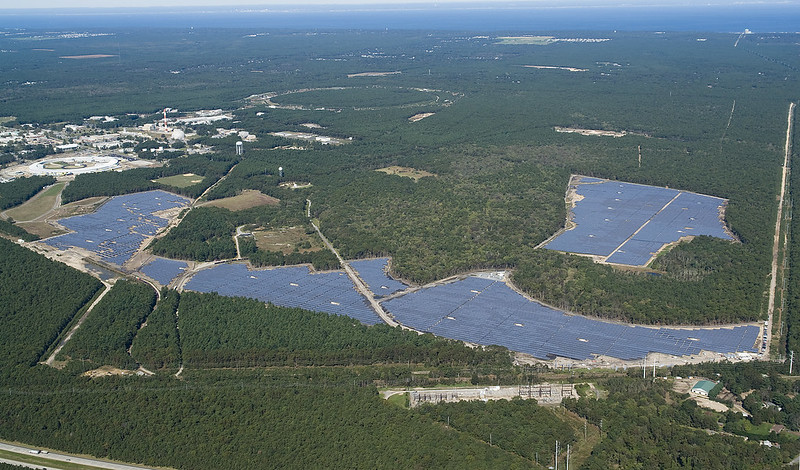
More Details +
Construction of the LI Solar Farm at Brookhaven National Laboratory (BNL) began in the fall of 2010 and officially concluded on November 18, 2011, when the solar array began commercial operation. It is the largest solar power plant in the eastern United States. It is situated on nearly 200 acres at the southeast end of the Laboratory site. It contains 164,000 solar panels that feed LIPA’s grid with up to 32 megawatts of electricity. Developed by BP Solar and privately owned, BNL has access to data from the array as a condition of the easement agreement granted by the U.S. Department of Energy for use of the BNL property. As the solar panels at the facility are collecting energy, researchers at Brookhaven are collecting large amounts of data from the systems. The data is being used by researchers at the Lab and across the country to address the key issues facing the implementation of large-scale solar power facilities.

US Dept of Energy report on the Solar Farm 2013
Phys.org article from November 2011
Newsday editorial “$300M solar array an investment for the future” November 2010
2012 — Superstorm Sandy
Hurricane Sandy was the deadliest hurricane of 2012 and one of the most destructive storms in U.S. history. The storm left 8.5 million without power, destroyed 650,000 homes, and was responsible for the deaths of at least 72 people.
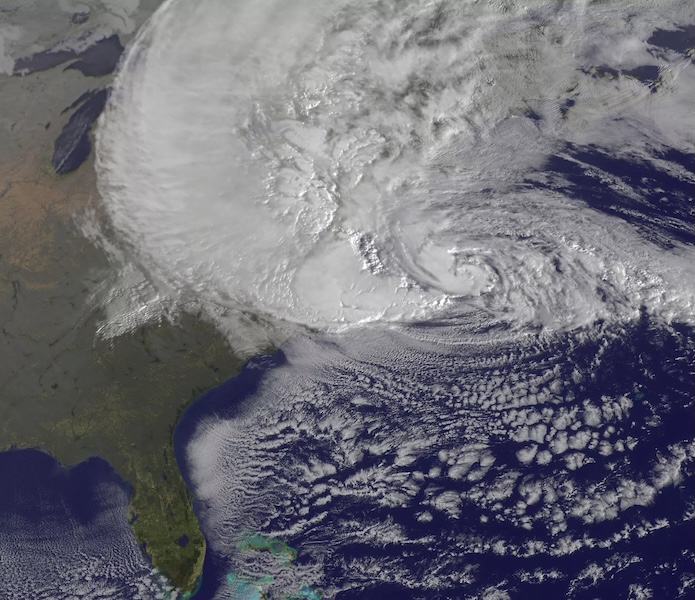
It took 13 days for power to be restored to 95% of LIPA customers after Sandy. LIPA was criticized for slow restoration, and especially for a lack of communication with the public and the unclear command structure between LIPA and the grid operator, National Grid, during the storm response. As a result, the public-private utility structure was refined by the LIPA Reform Act of 2013, and the contract with PSEG-LI, the new private company contracted to operate the transmission and distribution system, clarified responsibilities between LIPA and PSEG-LI.
More Details +
Hurricane Sandy was the deadliest hurricane of 2012 and one of the most destructive in U.S. history. Toward the end of October 2012, Hurricane Sandy plowed through the Caribbean, killing 75 people before heading north. As it approached the East Coast, even though its sustained winds dropped below hurricane speed, it produced the highest waves ever recorded in the western Atlantic and caused destructive storm surges and flooding throughout coastal New York and New Jersey on October 29, 2012. At one point, Sandy covered 800 miles between the East Coast and the Great Lakes. Also called Superstorm Sandy, it caused $70.2 billion worth of damage, left 8.5 million without power, destroyed 650,000 homes, and was responsible for the deaths of at least 72 people.

President Barack Obama declared a major disaster in both New York City and Long Island, releasing needed federal funding for residents of the area. The New York area was among the worst hit, flooding most of the city and coastal areas of Long Island. Power and transportation systems suffered unprecedented damage ($15-18 billion in New York) and lengthy transportation delays (all three New York City area airports were closed with more than 13,000 U.S. flights canceled and all MTA rail and bus services shut down) as a result of flooding, downed trees, and electrical outages caused by high winds. Military medical personnel were rushed to New York while National Guardsmen and other active-duty units were assigned to work under FEMA. High clearance vehicles, Humvees, Pavehawk Rescue and Black Hawk helicopters provided evacuation support to residents in areas that were inaccessible by other first responder vehicles. In all, 2300 troops were deployed in New York City and Long Island to support local emergency responders.
It took 13 days for power to be restored to 95% of customers after Sandy. LIPA was criticized for slow restoration, and especially for a lack of communication with the public and the unclear command structure between LIPA and the grid operator, National Grid, during the storm response. As a result, the public-private utility structure was refined by the LIPA Reform Act of 2013, and the contract with PSEG-LI, the new private entity contracted to operate the transmission and distribution system, clarified responsibilities.
Wall Street Journal video: “Hurricane Sandy: As It Happened”
Newsday Projects: Superstorm Sandy Hits LI: The First 30 Hours
Weather.com list of costliest storms in US history. Sandy at number 4
US Army website article about troops deployed to NY after Sandy:
2013 — Electric Grid Improvements Following Sandy
The New York Public Service Commission (PSC) took several essential steps to improve and strengthen the state’s large electric utilities during and after major storms. Those actions stem from recommendations made by the Moreland Commission on Utility Storm Preparation and Response, instituted by then Gov. Andrew Cuomo to investigate the electric utilities’ management, preparation and response to the major storms that have affected the state over the two years prior to 2013, including Superstorm Sandy, Hurricane Irene and Tropical Storm Lee.
More Details +
The New York Public Service Commission (PSC) took several essential steps to improve and strengthen the state’s large electric utilities during and after major storms. Those actions stem from recommendations made by the Moreland Commission on Utility Storm Preparation and Response, instituted by then Gov. Andrew Cuomo to investigate the electric utilities’ management, preparation and response to the major storms that have affected the state over the two years prior to 2013, including Superstorm Sandy, Hurricane Irene and Tropical Storm Lee. Those steps included strengthening Public Service Law and necessitating the filing and authorization of storm response plans, increasing penalties, giving power to the PSC to revoke certificates, and adding a utility scorecard to hold utilities accountable for storm response.
The PSC also ordered the six major investor-owned utilities operating in the state, as part of their revised emergency response plans, to implement reforms to issues identified in the Moreland Commission’s final report. The main reforms consist of utilities improving their development and their issuance of local estimated restoration times. Among other things, PSC directed utilities to define the exact temporary and permanent measures the companies were taking to strengthen energy distribution systems against future storm damage. Including, more transmission, renewable energy, demand response/smart grid and energy efficiency.
2014 — PSEG Makes Resiliency Improvements to the Grid
PSEG Long Island made significant improvements to the transmission and distribution infrastructure, storm response process, and technology following Superstorm Sandy, which had caused nearly all of the service territory’s 1.1 million customers to lose power. More than $729 million of federal recovery funds were secured via an agreement between Governor Andrew M. Cuomo and the Federal Emergency Management Agency (FEMA), under the FEMA Hazard Mitigation Assistance Program. This project has permitted PSEG Long Island to execute substantial storm hardening improvements, including flood mitigation, stronger infrastructure, smarter transmission & distribution equipment, and improved communication with customers.
More Details +
PSEG Long Island made significant improvements to the transmission and distribution infrastructure, storm process, and technology following Superstorm Sandy, which had caused nearly all of the service territory’s 1.1 million customers to lose power. More than $729 million of federal recovery funds were secured via an agreement between Governor Andrew M. Cuomo and the Federal Emergency Management Agency (FEMA), under the FEMA Hazard Mitigation Assistance Program. This project has permitted PSEG Long Island to execute substantial storm hardening improvements, including flood mitigation, stronger infrastructure, smarter transmission & distribution equipment, and improved communication with customers.
Flood mitigation: PSEG Long Island incorporated new storm surge prediction models to set new standards for elevating crucial equipment. The 12 substations affected by the storm have been upgraded and elevated to protect against flooding in the future.
Stronger infrastructure: Improvements include stronger poles to withstand winds up to 135 mph, thicker insulated wires to protect against tree limbs causing an electric problem in the event of contact, and shorter cross arms to move the lines closer together and help deflect falling limbs.
Smarter transmission & distribution equipment: Automatic switching units, a smarter technology, have been installed on targeted circuits across Long Island and the Rockaways. This automated technology transmits more data to PSEG to help minimize the number of customers affected when equipment fails. The utility has also implemented an outage management system (OMS) to improve the company’s ability to identify and manage outage conditions year-round. The system also expands the capacity to react and manage resources in the aftermath of a major storm. Tree limbs that come in contact with electric lines are a major cause of outages during storms. Sandy’s strong winds brought down many trees across Long Island. To further reduce storm damage to the electric system, PSEG instituted a tree trimming program working year-round to identify and trim tree limbs that could potentially cause outages during or after storms.
Communication with customers: PSEG Long Island launched a voice-activated customer service telephone system to document and report outages. Customers have access to an outage map for mobile and desktop devices, letting them view outages and get updates on expected restoration time and crews in their area. Customers can also report outages through social media or sign up to receive outage updates via text, email, and phone. A customer liaison program was also created to make real people available to offer information about restoration efforts and provide supplies, such as ice and water, to alleviate extended outages.
2016 — “Green for Green” controversy: solar power vs open space
Proposals for several utility-scale solar arrays on eastern Long Island raised concerns about the loss of open space. Open space advocates and neighbors of proposed solar farms strongly opposed the cutting of trees for large solar projects, claiming it was losing one ‘green,’ open space, for another ‘green,’ renewable energy. Some of the projects were approved and completed, while others were killed.
Newsday article about the controversy around a proposed solar farm (subscription required).
2017 — South Fork Wind Farm approved by LIPA
The South Fork wind farm is sited in federal waters off of Rhode Island and Massachusetts, leased by Deepwater Wind in a July 31, 2013 auction by the United States Bureau of Ocean Energy Management (BOEM).
Ørsted US Offshore Wind acquired Deepwater Wind in 2019. It joined with Eversource Energy to build the wind farm. The plan uses twelve 11-megawatt turbines. Long Island Power Authority purchases the electricity produced.
More Details +
The South Fork wind farm is sited in federal waters off of Rhode Island and Massachusetts, leased by Deepwater Wind in a July 31, 2013 auction by the United States Bureau of Ocean Energy Management (BOEM).
Ørsted US Offshore Wind acquired Deepwater Wind in 2019. It joined with Eversource Energy to build the wind farm. The plan uses twelve 11-megawatt turbines. Long Island Power Authority purchases the electricity produced. NYSERDA approved the project.
In January 2021, then NY Governor Andrew Cuomo announced that the South Brooklyn Marine Terminal would be developed to include a wind turbine assembly plant to be funded in part by the State of New York. Turbines assembled in the Brooklyn facility would be used in three offshore wind farms off the east end of Long Island. South Fork Wind Farm, Beacon Wind, and Sunrise Wind are projected to be supplied by 2025 from the new plant, built with $200 million in state funding and $200 million in matching grants. Part of a $29 billion 'Green Initiative' plan for New York, the project is anticipated to produce more than 1,000 new manufacturing jobs in Brooklyn.
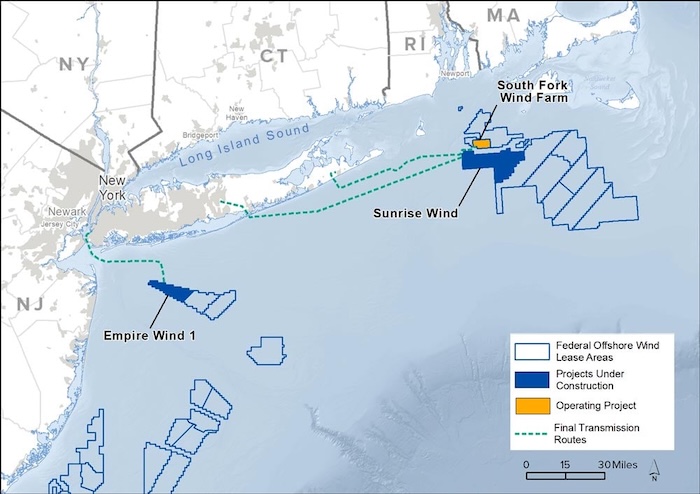
2017 — LIPA begins Smart Meter deployment
After earlier limited pilot projects of installing Advanced Meter Infrastructure (AMI) smart meters, LIPA began the widespread installation of AMI in 2017. 99% of customers had smart meters by 2022.
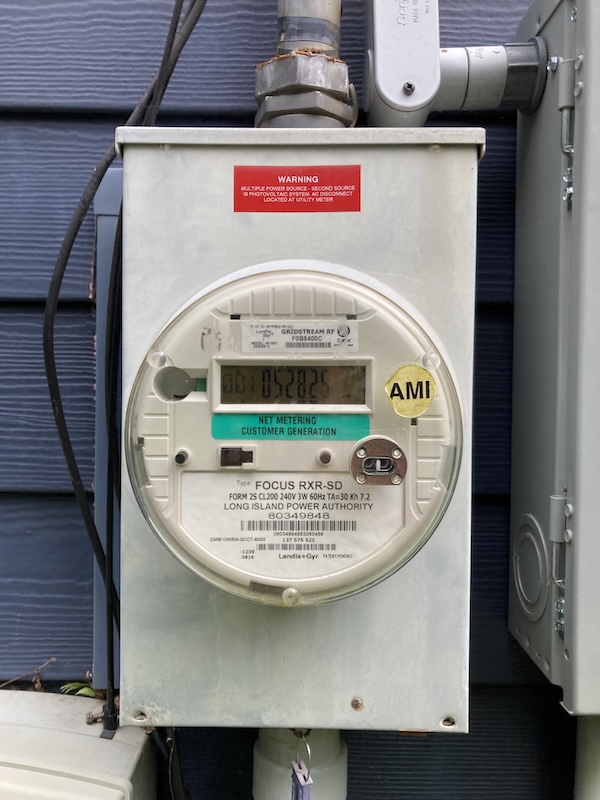
Smart meters allow for real-time monitoring and two-way communication necessary for a modern smart electric grid, improve the efficiency of grid operations, helping utilities make wiser decisions. These advanced meters credit energy added to the grid from private solar PV, and enable the utility to adjust prices based on time of use and better manage peak electricity demand.
Department of Energy report on AMIs
Newsday article on smart meters 2019
More Details +
After earlier limited pilot projects of installing Advanced Meter Infrastructure (AMI) smart meters, LIPA began the widespread installation of AMI in 2017. Service-territory-wide deployment of AMI was proposed in LIPA's 2018 Utility 2.0 plan, accelerating the installation of smart meters in 2019. Deployment was achieved sooner than expected, with 95% by September of 2021, and 99% in 2022. Only a small number of customers opted out.

Smart meters allow for real-time monitoring and two-way communication necessary for a modern smart electric grid, improve the efficiency of grid operations, helping utilities make wiser decisions. These advanced meters credit energy added to the grid from private solar PV, and enable the utility to adjust prices based on time of use and better manage peak electricity demand.
2020 — Tropical Storm Isaias
Tropical Storm Isaias blew into Long Island with strong winds on August 4, 2020 and left more than 400,000 homes and businesses without power, obstructed roads with downed trees, and drove the Long Island Railroad to suspend service. PSEG-Long Island reported about a third of its 1.1 million customers in Nassau and Suffolk counties lost power through the storm and extensive communications problems that aggravated the ability to report outages.
PSEG-LI failures comparable to the utility's Superstorm Sandy response sparked widespread customer dissatisfaction and advanced debate about the option of a fully public power structure on Long Island.
More Details +
Tropical Storm Isaias blew into Long Island with strong winds on August 4, 2020 and left more than 400,000 homes and businesses without power, obstructed roads with downed trees, and drove the Long Island Railroad to suspend service.
The National Weather Service reported the highest gust in the New York Metro area was 78 mph at Republic Airport in East Farmingdale.
PSEG-Long Island reported about a third of its 1.1 million customers in Nassau and Suffolk counties lost power through the storm and extensive communications problems that aggravated the ability to report outages. Officials stated that downed trees blocked hundreds of roads ranging from small side streets to major thoroughfares like the Southern State Parkway.
PSEG failures comparable to the utility's Superstorm Sandy response sparked widespread customer dissatisfaction and advanced debate about the option of a fully public power structure on Long Island, which may require state legislative action, is re-opened. PSEG-Long Island loses $10 million in annual incentive bonus, and LIPA Board of Trustees re-negotiates a new contract which PSEG-LI agrees to. The new contract provides a tighter incentive structure.
Newsday article on customer satisfaction plummeting after Isaias
Newsday article on PSEG’s storm response failures
American Public Power article on LIPA/PSEG agreement on contract reforms
2021 — Hurricane Ida
Hurricane Ida was a deadly and devastating Category 4 hurricane that became the second-most damaging and intense hurricane to make landfall in the state of Louisiana behind Hurricane Katrina in 2005. The remnants of the storm also caused a tornado outbreak and catastrophic flooding across the Northeast and dumping nearly 7 inches of rain on parts of Long Island, leaving downed trees, power outages, and road closures in its path. PSEG-Long Island reported that there were more than 30,000 customer power outages across the island.
More Details +
Hurricane Ida was a deadly and devastating Category 4 hurricane that became the second-most damaging and intense hurricane to make landfall in the state of Louisiana behind Hurricane Katrina in 2005. The remnants of the storm also caused a tornado outbreak and catastrophic flooding across the Northeast and dumping nearly 7 inches of rain on parts of Long Island, leaving downed trees, power outages, and road closures in its path.
The National Weather Service (NWS) reported 6.86 inches of rain fell in Setauket, the highest rainfall total on LI, while Nassau’s highest rainfall total was 4.87 inches in Glen Head. PSEG-Long Island reported that there were more than 30,000 customer power outages across the island.
The remnants of Ida prompted Gov. Kathy Hochul to declare a state of emergency for Nassau, Suffolk, and New York City. The governors of New York and New Jersey declared a state of emergency as record-breaking rains from tropical storm Ida led to flooding and unsafe conditions on roadways, subway and rail systems, and many neighborhoods. The Long Island Railroad suspended systemwide service "due to severe weather conditions, including flash flooding." In total, the storm and flooding were responsible for seventeen deaths in New York State.
Then New York City Mayor Bill de Blasio described the flooding and weather as a “historic weather event.” The National Weather Service issued a flash flood emergency in New York City for the first time. In NYC many people had been trapped in their basements as the storm sent water rushing through the city where at least eleven died.
Ida Impact on Long Island WPIX News
Gov. Hochul visits Long Island to detail recovery efforts
2021 — Long Island Solar Roadmap
Responding to the resistance to building large solar arrays on undisturbed open space, the Nature Conservancy and Defenders of Wildlife released a report on the potential for developing solar PV on already developed locations, including parking lots, large roofs, and previously disturbed land. The report was developed with input from a steering committee and a consortium of stakeholders from utilities, local governments, solar industry, academic institutions, and environmental organizations. The report’s analysis of the solar PV potential of low-impact sites for solar PV development estimated that a total of almost 19.5 gigawatts of solar capacity could be located on these sites.
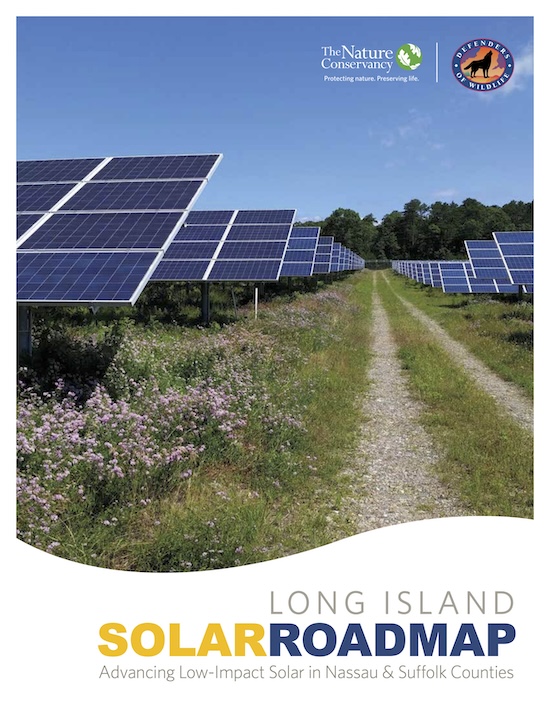
Learn more about the Long Island Solar Roadmap
2024 — South Fork Wind completed
Construction of the twelve 11-megawatt turbines was completed in March of 2024. Long Island Power Authority purchases the electricity produced.

Summary and Analysis:
Long Island's high energy costs, a failed attempt to introduce nuclear energy, the Island’s location on the Atlantic coast which makes it vulnerable to hurricanes and nor'easters, the primarily overhead transmission and distribution grid which can result in signifcant outagages and long restoration times after storm damage, and the political responses to these challenges have resulted in a public/private electric utility structure that is unique in the nation. The push and pull between public accountability and private efficiency has made Long Island a case study in utility governance. As the region transitions toward cleaner energy sources and contends with rising demand and aging infrastructure, the choices made in past decades offer critical lessons for ensuring affordability, resilience, and transparency in energy policy today and into the future.